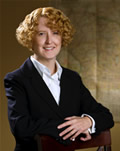
Over the years, I’ve had the pleasure of working with SCO staff on a number of projects and initiatives. Jim Lacy and I served together as members of the Wisconsin Land Information Association (WLIA) Emergency Management Task Force from 2004 to 2006. After which, I participated on a project review team led by AJ Wortley in support of the WLIP Annual Survey – RAMONA GIS Inventory effort. In addition, for the last two years, Ted Koch and I have worked closely as members of the Wisconsin Geographic Information Coordination Council (WIGICC) Working Group. So, I was thrilled to join the SCO team as a part-time Associate Outreach Specialist in May.
In this new role, I will provide coordination and support for the newly forming WIGICC and stakeholder Network. I’ll also be working collaboratively with Geographic Information Officer (GIO) Curtis Pulford and his staff to develop and maintain a new WIGICC Web site, which will facilitate Network stakeholder communication through collaboration tools like blogs, wikis, forums and dynamic news feeds.
But, WIGICC won’t be my only focus. I’ll be contributing to the SCO Web site and Bulletin, answering public inquiries on geospatial-related topics, and participating in committees and task forces. Currently, I’m serving as Kelly Felton’s co-chair on the Wisconsin Land Information Association (WLIA) Legislative Issues Committee, for which I helped to create an online committee blog to alert the WLIA membership of pending legislation and current issues. I’m also a member of the newly formed Urban and Regional Information System Association (URISA) Policy Committee.
Life before the SCO
When I’m not wearing my SCO hat, I’m a hard-working graduate student. This year I’ll be finishing a Ph.D. in Environmental Monitoring through the Gaylord Nelson Institute for Environmental Studies, University of Wisconsin-Madison. My degree is in geospatial information science and its applications to agriculture, land use, resource and ecosystem management. But, I have a special interest in the legal and institutional infrastructures that facilitate geospatial data coordination and exchange. My dissertation research explores such questions as ‘under what circumstances are geospatial data accessible under open records law,’ ‘how do we effectively and equitably balance the need for government transparency and accountability with other competing interests, like location privacy, intellectual property, and cost-recovery,’ and ‘what are the implications for spatial data infrastructure development?’ As I’m tracking these issues nationally for my own research, I recently launched a Geodata Policy Blog to organize this information so that might be useful for others.
What I’ve really enjoyed has been the opportunity to work on a diversity of geospatial projects and to meet a broad spectrum of professionals. I’ve worked on numerous projects conducted through the Land Information and Computer Graphics Facility (LICGF), located within the UW-Madison College of Agricultural and Life Sciences, through grants from Rural Geospatial Innovations in America (RGIS), USDA Hatch, and the National Resource Conservation Service (NRCS). These efforts focused on building rural and tribal community geospatial capacity and on the development and use of geospatial tools and models to support local decision-making, such as developing a reservation/county-wide addressing system, building the Great Lakes Coastal Community Planning Resource, and conducting bioenergy production facility site suitability analyses.
In addition to doing technical GIS work, I’ve participated in a few national studies, producing a reports that may be of some interest, including: a series of reports on leading state geographic information governance models and coordination programs (WI SCO and GIO); a report on leading institutional models for land records modernization (GeoAnalytics, Inc, Nebraska’s Land Records Modernization Study); and, a 50-state survey assessing the strengths and weaknesses of the National Framework Survey implementation, which led to a set of recommendations, many of which were implemented in the RAMONA GIS Inventory (USGS FGDC).
Send feedback!
I’d like to take this opportunity to solicit your feedback. Do you have comments on the WIGICC effort? What about the WIGICC Web site? If so, please feel free to drop me a line via e-mail, or to give me a call at (608) 890-2456. I’d appreciate anything you’d like to share – comments, stories, and insights!
